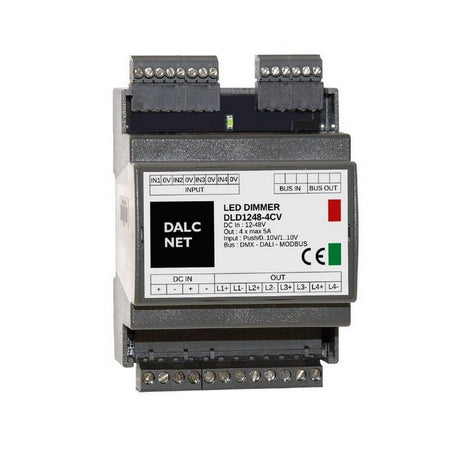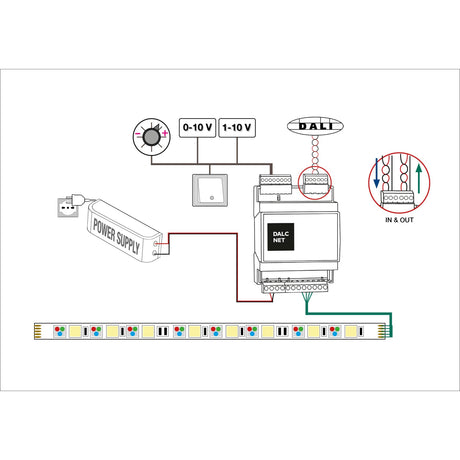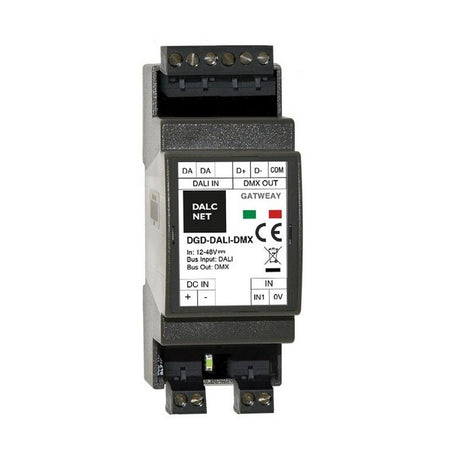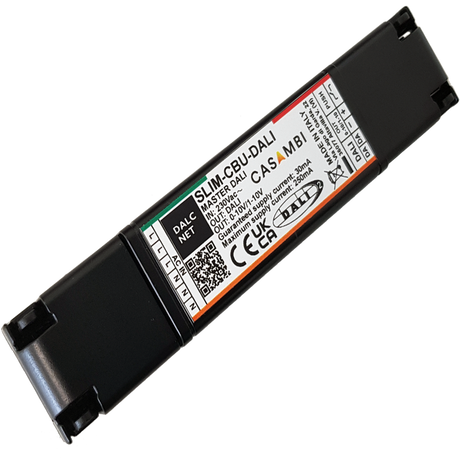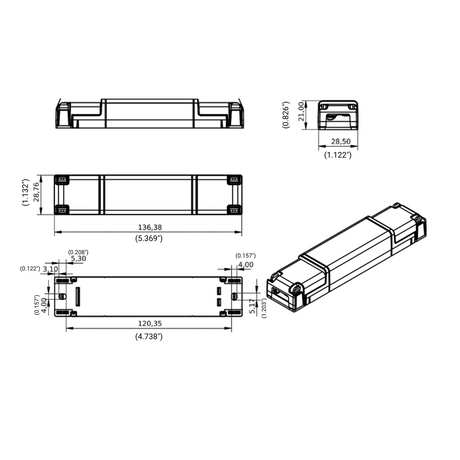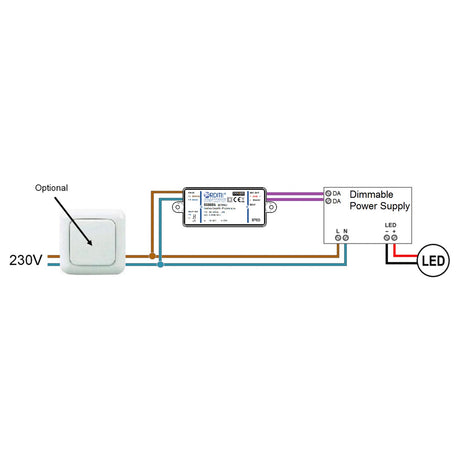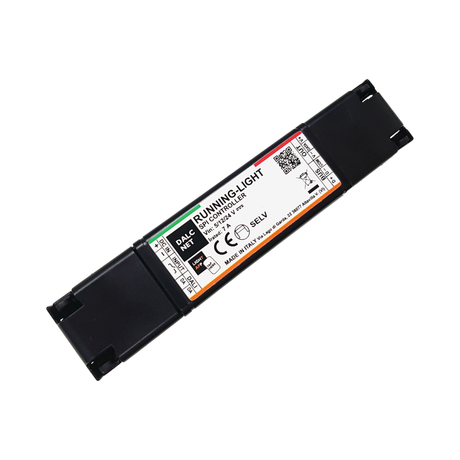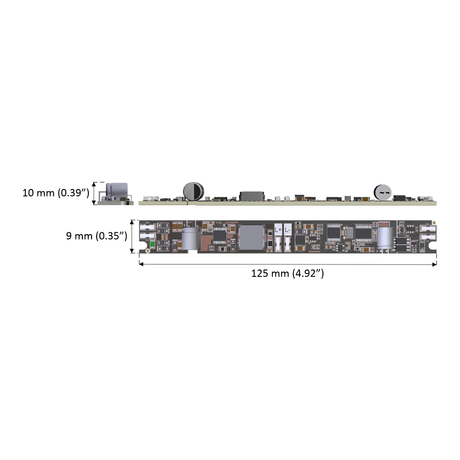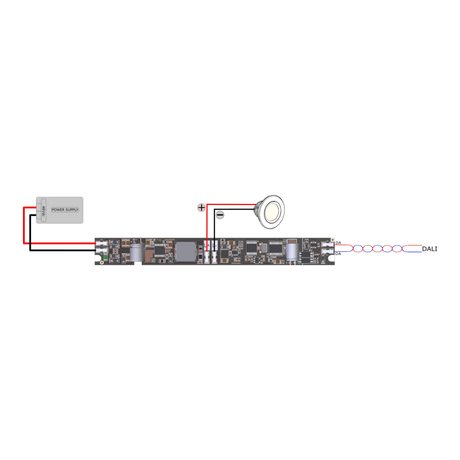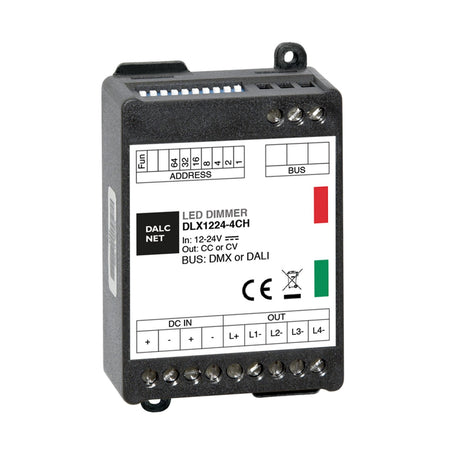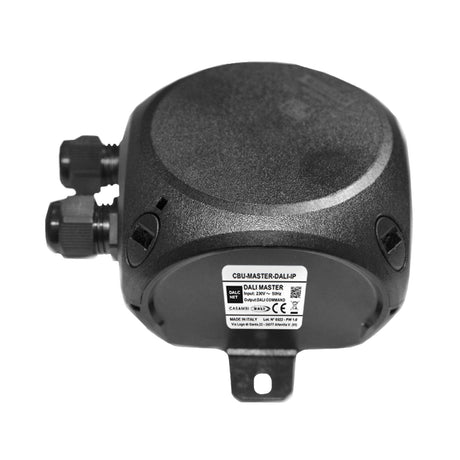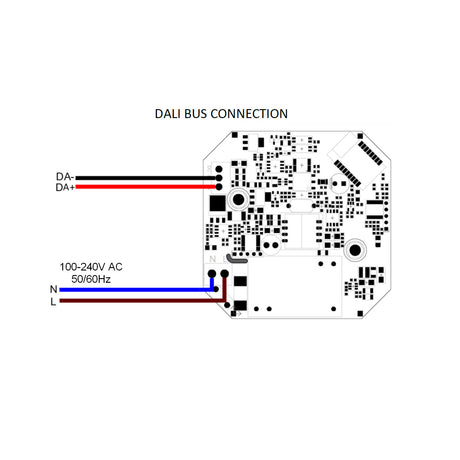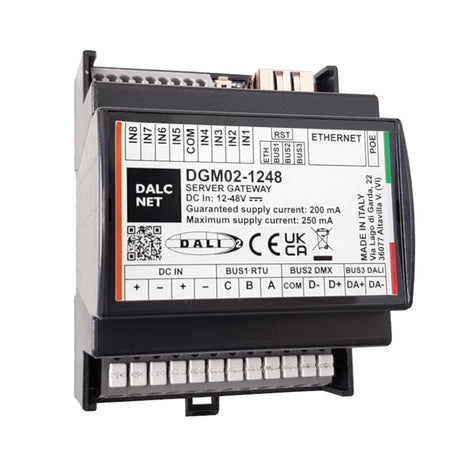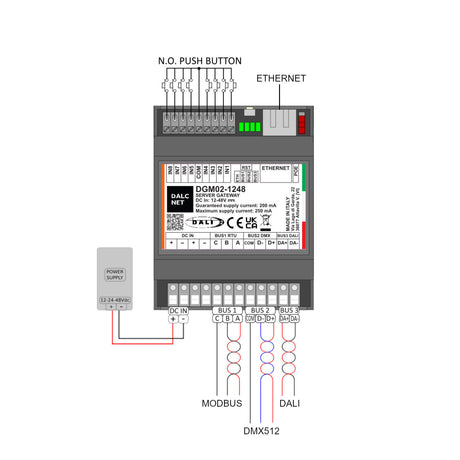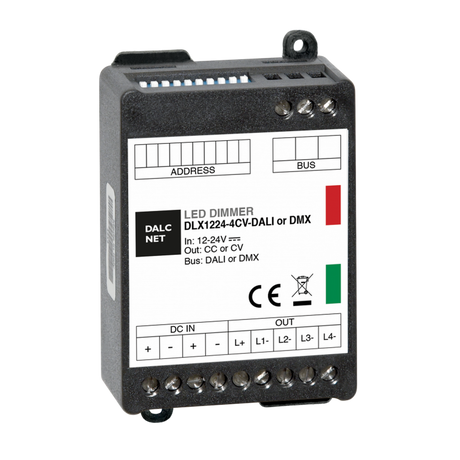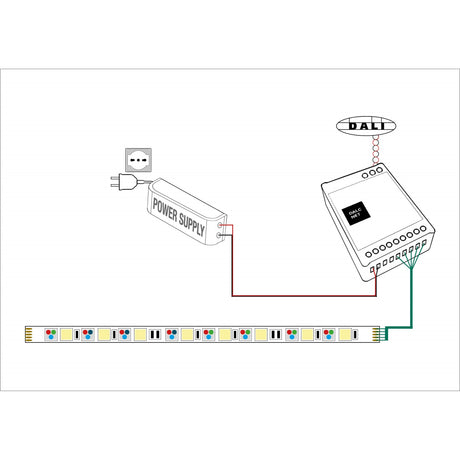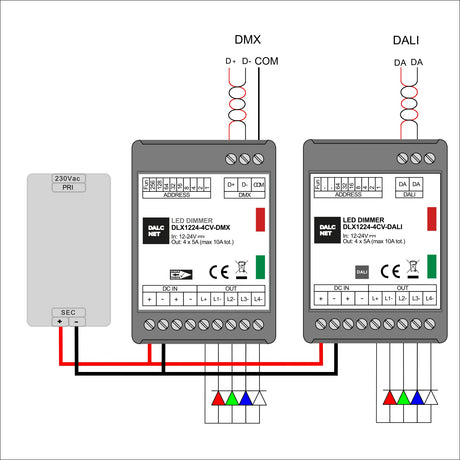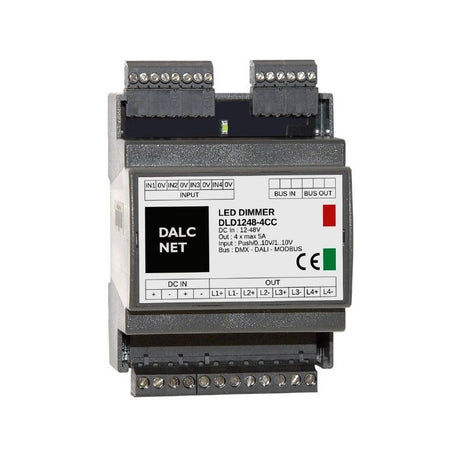-

DIN-rail 4-Channel Constant Voltage LED Dimmer with DALI ~ Model DLD1248-4CV-DALI
Regular price $196.95 USDUnit priceUnavailableNetwork Gateway with DALI to DMX Converter ~ Model DGD-DALI-DMX
Regular price $224.46 USDUnit priceUnavailableMiniature 1-Channel LED Dimmer with DALI ~ Model MINI-1CV-DALI
Regular price $74.12 USDUnit priceUnavailableSlimline 2-Channel Tunable-White LED Dimmer with Dali ~ Model SLIM-2CV-DALI
Regular price $101.66 USDUnit priceUnavailableNetwork Gateway with DMX to DALI Converter ~ Model DGD-DMX-DALI
Regular price $224.46 USDUnit priceUnavailableSlimline Casambi to DALI Signal Converter ~ Model SLIM-CBU-DALI
Regular price $163.06 USDUnit priceUnavailableCasambi Controller for Dimmable LED Power Supplies ~ Model CBU-ASD IP65
Regular price $134.03 USDUnit priceUnavailable- 5% off
SPI Controller for Pixel Digital LED Strip ~ Model RUNNING-LIGHT
Sale price $120.72 USD Regular price $127.07 USDUnit priceUnavailable Single Channel Constant Current LED Controller with Hybrid Dimming ~ Model MINITRACK-1CC-DALI-HC
Regular price $50.82 USDUnit priceUnavailableRGBW 4-Ch Constant Current LED Controller with DALI (350mA) ~ Model DLX1224-4CC350-DALI
Regular price $108.00 USDUnit priceUnavailableRGBW 4-Ch Constant Current LED Controller with DALI (500mA) ~ Model DLX1224-4CC500-DALI
Regular price $108.00 USDUnit priceUnavailableCasambi Enabled DALI Master with Mains Power ~ Model CBU-MASTER-DALI-IP
Regular price $592.94 USDUnit priceUnavailableMulti-Bus Network Gateway and Protocol Converter ~ Model DGM02-1248
Regular price $847.05 USDUnit priceUnavailableNetwork Gateway with Casambi to DALI Converter ~ Model CBU-DALI-GATEWAY
Regular price $398.13 USDUnit priceUnavailableRGBW 4-Channel LED Dimmer with DALI Control ~ Model DLX1224-4CV-DALI
Regular price $76.67 USDUnit priceUnavailable- 5% off
DIN-rail 4-Channel Constant Current LED Dimmer with DALI ~ Model DLD1248-4CC-DALI
Sale price $187.10 USD Regular price $196.95 USDUnit priceUnavailable

What is DALI Lighting Control?
DALI, which stands for Digital Addressable Lighting Interface, is a 2-way communications protocol that revolutionizes lighting control and communication within a lighting system. With DALI lighting control, components such as DALI ballasts, drivers, and sensors can seamlessly communicate with each other, enabling precise control and coordination of lighting fixtures.
The DALI protocol allows for bidirectional communication, allowing devices to send and receive information. This means that commands can be sent to the lighting fixtures, and feedback and status information can be received from them.
Through the use of DALI software and controllers, users can easily configure and manage their lighting system, create customized lighting scenes, schedule lighting events, and monitor energy usage. DALI dimmer switches provide manual control options, allowing users to adjust brightness levels and switch lighting zones. In essence, DALI lighting control empowers users to have advanced control over their lighting systems, enhancing energy efficiency, flexibility, and customization.
The Power of DALI for Enhanced Performance and Flexibility
DALI represents a groundbreaking advancement in lighting control. Unlike the unidirectional broadcast nature of 1-10V analog control, DALI introduces digital two-way communication, enabling devices to provide valuable feedback on their health, status, and other crucial information.
In 2020,a newer version of the DALI lighting control protocol that was released which is called DALI-2. It follows the IEC 62386 international standard and includes a number of new features, such as:
- Support for more control devices: In addition to control gear, DALI-2 can also support other control devices, such as application controllers and input controllers. This makes it more flexible and versatile than the original DALI protocol.
- Improved interoperability: DALI-2 is designed to be more interoperable with lighting products from different manufacturers. This means that it is easier to create a lighting system that uses products from a variety of manufacturers.
- Enhanced security: DALI 2 includes enhanced security features that make it more difficult for unauthorized users to access or modify the lighting system.

Furthermore, DALI simplifies wiring with power and data transmitted through a single pair of wires, eliminating polarity-related wiring errors commonly found in 1-10V systems. With DALI, individual drivers on the same network can be addressed and dynamically assigned to virtual lighting groups.
This unprecedented level of control empowers architects and designers to craft high-performance lighting solutions that perfectly align with the unique needs of the building's occupants. DALI revolutionizes lighting control, offering enhanced performance and flexibility like never before.
How DALI Lighting Control Works
DALI lighting control system that uses digital signals to send commands to LED drivers. The DALI bus is a two-wire network that connects all of the components in the system. Each LED driver has a unique address, so commands can be sent to specific drivers.
The DALI system mainly consists of three components:
DALI Bus Power Supply
DALI bus is the core of the DALI system. It is a two-wire bus that carries command signals from the input/application controllers to the receiving devices (LED drivers). The bus is unpolarized, which means that it does not matter which way the wires are connected.
The DALI bus is not only used for controlling lighting, but it can also be used for:
- Configuring the entire lighting system: The DALI bus can be used to configure the brightness, color, and other settings of all the luminaires in a system.
- Finding out which light fixtures in the building is malfunctioning: The DALI bus can be used to identify which luminaire is not working properly. This can be helpful for troubleshooting problems with the lighting system.
- Receiving information about current lighting conditions of all luminaire system: The DALI bus can be used to receive information about the current brightness, color, and other settings of all the luminaires in a system. This information can be used to monitor the performance of the lighting system and to make changes as needed.
A DALI power supply supplies power of 16 V to the bus system. This power is used to power the LED drivers and other devices on the bus.
Control Input Devices
Control devices are the one that can send commands to other devices on a DALI bus. They can be categorized into two types:
- Application controllers: These devices receive information from input devices, make decisions, and send commands to other devices. They can also process information from external bus systems and control gear.
- Input devices: These devices send information to application controllers. They can be switches, sensors, or keyboards.
Control devices can also collectively use the functionalities of both components. This means that a control device can be both an application controller and an input device.
The control gear is the receiving end of the DALI lighting control system. It is the main DALI LED driver that supplies light to lamps. The control gear takes data from the input/application controllers and supplies the specific current to the lamp. DALI networks support numerous LED drivers and ballast networks.
Application Controllers
Application controllers are devices that receive information, make decisions, and send commands to other devices. They can process information from a variety of sources, such as input devices, external bus systems, control gear, and other controllers.
Application controllers play a vital role in the smooth operation of any system. They ensure that the data traffic on the bus system is regulated and that the devices are able to communicate with each other effectively.
Let's understand how the components in a DALI system work in harmony:
- The DALI bus power supply provides power to the DALI bus and the LED drivers.
- The control input devices send commands to the DALI bus. These commands can be used to dim the lights, turn them on and off, or change their color.
- The LED drivers receive the commands from the DALI bus and control the final light output.
- The luminaires (light fixtures) are connected to the LED drivers and emit light.
The DALI system is a very flexible and powerful lighting control system. It can be used to control a wide range of lighting applications, from simple dimming to complex color control.
Advantage of using DALI lighting control system
- DALI emergency lighting: DALI protocols can detect when a fitting in the system is not working or malfunctioning. This is helpful for the maintenance of large projects. Instead of having to send a maintenance team to check every room on every floor of a building, the integrated building management system can be connected to DALI and the emergency can be identified in a few seconds.
- Two-way communication: DALI is a two-way system, which means that signals can be sent to and from the devices on the network. This allows the devices to communicate seamlessly and provides for more flexibility in the system.
- Quick reconfiguration: DALI devices can be easily and quickly reconfigured if the system is moved to another building or space. This makes it easy to adapt the system to changing needs.
- Bus topology: DALI components can be connected in any topology, such as star, tree, or daisy chain. This allows for flexibility in the system design and makes it easier to add or remove devices as needed.
- Reduced cable lengths: DALI uses a 16V bus power supply to supply power to all of the connected components. This reduces the need for individual power supplies and can help to reduce cable costs.
- Scalability: DALI networks can be scaled up to 64 devices. Each device can be assigned to 16 groups and 16 scenes. This allows for a great deal of flexibility in the system and makes it suitable for large projects.
- Switching lighting presets: DALI systems can store multiple lighting presets. These presets can be switched between with just a button. This makes it easy to create different lighting moods for different occasions.
Overall, DALI protocols offer a number of advantages that make them a good choice for lighting control systems. They are flexible, scalable, and easy to use.
Applications of DALI lighting control
- Large commercial settings: DALI systems are often used in large commercial settings, such as office buildings, hotels, and retail stores. This is because DALI systems can be used to control individual as well as grouped lighting systems, which gives businesses a great deal of flexibility.
- Residential areas: DALI systems are also becoming increasingly popular in residential areas. This is because DALI systems can be used to create different lighting moods for different occasions, which can make homes more comfortable and inviting.
- Other applications: DALI systems can also be used in other settings, such as museums, schools, and hospitals.
How DALI Dimming Works
DALI dimming works by establishing a sophisticated communication network between the DALI controller, DALI dimmers, and lighting fixtures. The system allows precise control over the light output, enabling users to adjust brightness levels and create customized lighting scenes.
When a user interacts with a DALI dimmer switch, the command is transmitted through the DALI dimming wiring to the DALI controller. The controller then sends corresponding signals to the individual DALI dimmers connected to the lighting fixtures. These signals instruct the DALI dimmers to adjust the light output according to the user's input.
DALI dimming employs a two-way communication protocol, allowing for advanced functionality and feedback. The DALI system can receive information from the lighting fixtures, such as their status and energy consumption, and provide commands for specific actions.
To program and configure the DALI dimming system, a DALI programmer and software are utilized. With these tools, users can set up lighting scenes, define schedules, and fine-tune various parameters to achieve the desired lighting effects.
The interconnection between the DALI controller, DALI dimmers, and lighting fixtures is illustrated in a schematic DALI lighting control wiring diagram. This diagram provides a visual representation of how the components are connected within the system.
Schematic DALI Lighting Control Wiring Diagram
The Schematic DALI Lighting Control Wiring Diagram showcases the layout and connections involved in a DALI lighting control system.
This diagram provides a visual representation of how the components of a DALI system, including DALI ballasts, controllers, and sensors, are interconnected. It illustrates the wiring scheme that enables communication and control through the DALI protocol.
With the wiring diagram, installers and technicians can gain a better understanding of how to set up and configure the DALI system effectively. It serves as a valuable reference for DALI programming and ensures a smooth implementation of the lighting control solution.
DALI vs. 1-10V: Which Lighting Control Protocol is Right for You?
DALI and 1-10V are two of the most popular lighting control protocols in use today. Both systems have their own advantages and disadvantages, so it is important to understand the differences between them before making a decision.
DALI is a digital system that uses a two-way communication protocol. This allows for more precise control of the lighting and also makes it possible to create complex lighting scenes.
1-10V is an analog system that uses a single-wire communication protocol. This makes it less expensive and easier to install than DALI systems. However, 1-10V systems are not as precise as DALI systems and cannot be used to create complex lighting scenes.
Ultimately, the best lighting control protocol for you will depend on your specific needs and budget. If you need precise control of the lighting and want to create complex lighting scenes, then DALI is the better choice.
FAQ
How is DALI lighting control different from other lighting control systems?
DALI lighting control stands out for its two-way communication capabilities, allowing for more advanced control and monitoring compared to traditional unidirectional systems. It offers greater flexibility, precise dimming, and the ability to address individual fixtures on the network.
Can I retrofit my existing lighting system with DALI control?
In many cases, DALI control can be retrofitted into existing lighting systems. However, it is advisable to consult with a professional installer or technician to assess the compatibility and feasibility of retrofitting DALI control into your specific setup.
How many lights should be on a DALI circuit?
The number of lights that can be connected to a DALI circuit depends on various factors, including the specific DALI controller and the power supply capacity. Please send us a message to guide you with the proper instructions.
Are all lights compatible with DALI?
No, not all lights are inherently compatible with DALI. To ensure compatibility with DALI, it is important to select lighting fixtures that are explicitly designed or specified as DALI-compatible.
Is DALI wired or wireless?
DALI is a wired lighting control protocol. It uses a two-wire bus to transmit data between devices. There is also a wireless DALI protocol called DALI 2, but it is not as widely used as the wired version.

